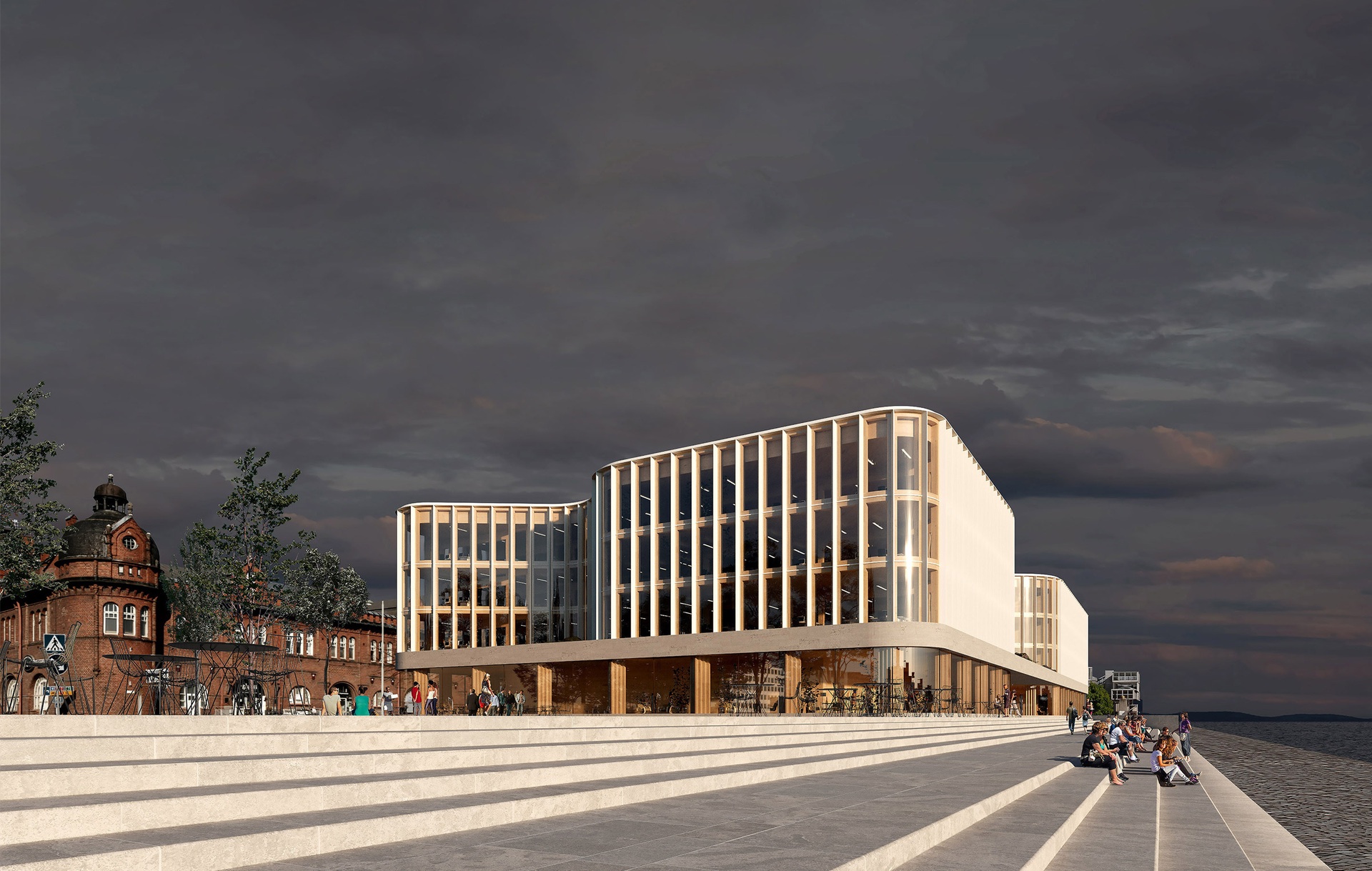Helsinki’s latest timber commercial building ate 6,000 tonnes of CO2

Efforts to normalize wood as the primary building material in Europe continue with the construction of a solid wood commercial building in Helsinki, Finland, developed by Finnish pension insurer Varma.
Located in the city’s Katajanokka island district, the building, called Katajanokan Laituri, will house a hotel, a conference center and the Finnish headquarters of timber company Stora Enso, which supplies the solid wood elements.
“There is no comparable wooden frame anywhere else in the world,” Stora Enso said in a press release.
The company is using its “Sylva” system for the project, which it calls “a solid timber construction kit with prefabricated, bespoke applications delivered just-in-time to the construction site.”
The supporting column and beam frame will be made from 1,600 cubic meters of laminated veneer lumber (LVL) supplied by Stora Enso’s Varkaus mill in eastern Finland.
Nowhere else in the world is there a comparable wooden frame
6,000 cubic meters of cross-laminated timber (CLT) from the company’s Gruvön mill in Sweden make up the building’s walls, floors, roof and stairs.
The facade will consist mainly of glass.
The company said the wood used in Katajanokan Laituri sequestered around 6,000 tons of CO2, equivalent to the annual emissions of about 3,500 cars.
In day-to-day operation, the building is aiming for LEED Platinum environmental certification.
Work on it began a year ago with demolition and excavation. This week Stora Enso said the first solid wood elements have been installed. Completion is scheduled for summer 2024.
“This building pushes the boundaries and shows what is possible with wood as a climate-friendly building material,” said Seppo Parvi, Manager of Stora Enso Finland.
“It is designed to last at least 100 years and stores carbon for the life of the building and its wooden structures.”
Building with prefabricated timber elements is faster than concrete because it requires far fewer frame-related steps on site, Stora Enso said.
The relative lightness of the elements also reduces the number of truck deliveries.
Prefabrication also results in better site safety and less noise and waste, she added.
Project leader: Haahtela
Architect: Anttinen Oiva Arkkitehdit
Timber frame contractor: Puurakentajat Rakennus